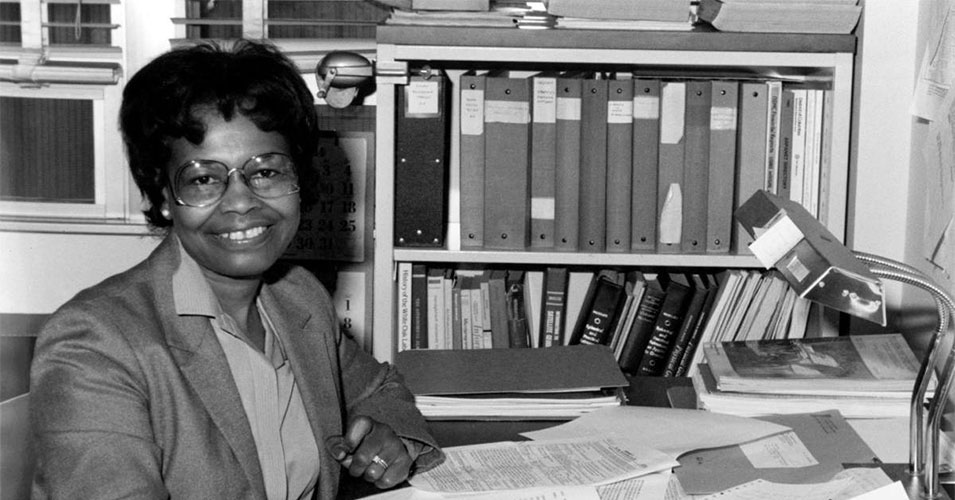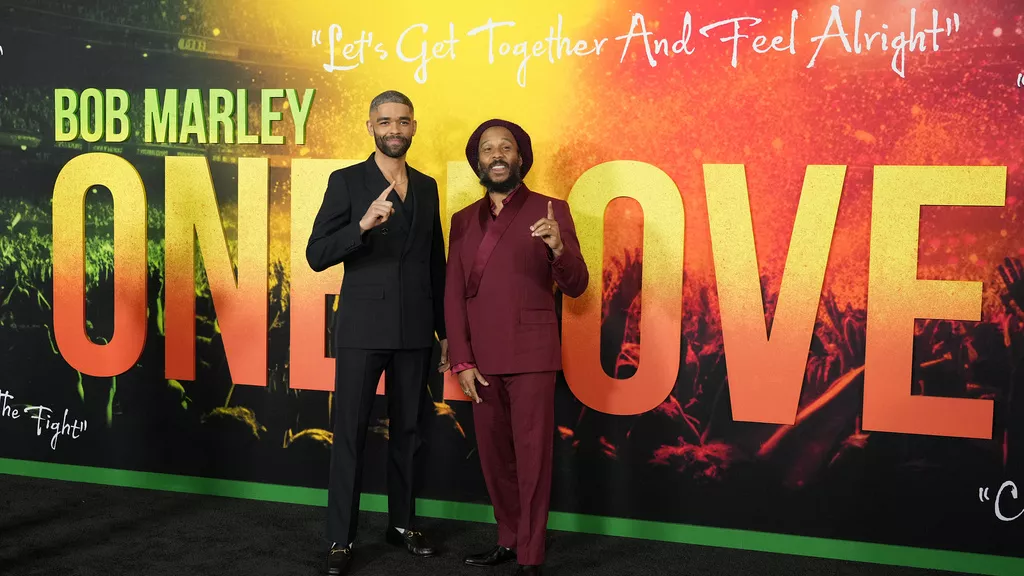Women’s History Month 2024 will be celebrated in March this year. While the tech industry is recognized for its innovation, it falls short in terms of gender diversity. Currently, women occupy just over a quarter of tech-related jobs.
Larger tech firms, employ over 10,000 people, reporting women’s representation at a mere 26.2%. The scarcity of high-profile women leaders in the Tech world remains apparent. This was exemplified by the recent departures of YouTube CEO Susan Wojcicki and Meta’s chief business officer Marne Levine.
Despite higher levels of women in leadership roles reported by Meta and Alphabet in their recent diversity reports, the overall trend in the tech sector shows a decline in the number of women in leadership positions.
According to DDI’s 2023 Global Leadership Forecast, based on a survey of 13,695 business leaders from over 1,500 global companies, the percentage of women in tech leadership roles has dropped to 28% in 2023.
In the context of Women’s History Month, Tracy Byham, CEO of DDI, expressed that the persistently low number of women in tech positions is not surprising. DDI’s two-decade-long research indicates that, although the number of women in technology leadership roles has shown some increase, it has never surpassed 33%. So let’s look at the super women that provided a foundation for women to take over Tech in the past.
Dr. Glady’s West

Dr. Gladys West is a successful Black leader in tech and an inspiration during Women’s History Month 2024. She is known for creating the code that made GPS possible. Her dedicated work for over ten years accounted for various forces affecting Earth’s shape, making GPS a reality today.
From a young age, Gladys West knew that she didn’t want to be a farmer. Born in 1930 in Dinwiddie County, Virginia, the mathematician had to help harvest crops on her family’s small farm despite her dislike for the hard work that started before daybreak and continued into the blistering heat of the afternoon.
However, her focus remained on the red schoolhouse at the end of the farm, recognizing it as her ticket to freedom.
The three-mile walk to the elementary school through woods and streams was challenging. Her parents aimed to save money for her college education, but unexpected bills hindered their progress.
Determined to pursue higher education, West took the opportunity when the state gave out a college scholarship for the top two students in her year.
“I started doing everything so that I would be at the top,” West recalls. “And sure enough, when I graduated from high school, I got one.” The scholarship enabled her to attend Virginia State College, a historically black university.
Dr. Gladys
While her tuition was covered, West needed funds for room and board. Facing this challenge, she confided in her math teacher, who recognized her potential and offered her a part-time babysitting job. Adjusting to the transition from her rural school to a larger university, West realized the need for dedicated effort to keep up with students from bigger cities.
Choosing mathematics as her major, West, undeterred by the subject’s male-dominated reputation, was driven by her deep conviction that nothing would stand in her way. Reflecting on her focused journey, she acknowledges the sacrifices made but looks back with laughter, realizing the importance of balancing dedication with enjoying the journey.
Dr. Marian Croak

Dr. Marian Croak, currently the Engineering Vice President at Google, played a key role in developing VoIP during her time at AT&T. She also enabled charitable donations via text. Recognized as an inspirational Black leader, Dr. Croak has revolutionized online collaboration with her discoveries, impacting tools like Google Meet.
Engineer Marian Croak has played a pivotal role in advancing Voice over Internet Protocol (VoIP) technologies, transforming voice data into digital signals for seamless transmission over the Internet, eliminating the need for traditional phone lines.
Her contributions have significantly enhanced the capabilities of audio and video conferencing, making them integral aspects of today’s communication landscape.
In 1982, Croak initiated her career at Bell Labs (later AT&T) within the Human Factors research division, exploring how technology could positively impact people’s lives.
Transitioning to network engineering, she envisioned the potential of digital telecommunications, challenging the conventional separation of voice communication through phone lines and internet data through digital methods.
Instead, Croak and her team proposed an integrated digital approach, focusing on ensuring reliable and high-quality voice traffic. Today, the widespread use of VoIP technology is essential for remote work, conferencing, and personal communications.
Throughout her career, Croak and her team developed a text-to-donate system for charitable organizations, gaining prominence after Hurricane Katrina in 2005 and raising $130,000.
Following the 2010 earthquake in Haiti, the technology garnered $43 million in donations. Joining Google in 2014 as vice president of engineering, Croak leads the Research Center for Responsible AI and Human-Centered Technology. She has also spearheaded initiatives to bring broadband to developing countries in Asia and Africa.
Dr. Shirley Jackson

Dr. Shirley Jackson was the first African American woman with a doctorate in nuclear physics from MIT. She invented fibre-optic cables that connect the world’s communication systems.
Her experiments also led to developments in touch-tone phones, portable fax machines, caller ID, and call waiting. The inventions make her a legend and a role player during Women’s History Month 2024.
Dr. Shirley Ann Jackson, a renowned theoretical physicist and notable black inventor, has contributed to the field of science. Her interest in science and mathematics began in childhood, leading her to conduct experiments on honeybees’ eating habits.
She earned both a bachelor’s and doctoral degree in physics from the Massachusetts Institute of Technology (MIT) and became the first African-American woman to receive a Ph.D. from MIT.
Working at Bell Laboratories, Dr. Jackson conducted groundbreaking experiments in theoretical physics and applied her knowledge to advance telecommunications research.
Her fundamental scientific research paved the way for various inventions, including the portable fax, and the touch-tone telephone. Others include solar cells, fiber optic cables, and the innovations behind caller ID and call waiting.
Currently, she serves as the president of Rensselaer Polytechnic Institute, the oldest technological research university in the United States. Dr. Jackson aims to elevate Rensselaer’s status in the 21st century as a top-tier, world-class technological research university with global impact.
Rensselaer, founded in 1824, has a longstanding mission to “apply science to the common purposes of life.” Under Dr. Jackson’s leadership, the university continues its commitment to excellence, recently being ranked among the top 50 universities in the United States by U.S. News and World Report.
Valerie Thomas
Valerie Thomas, the inventor of the illusion transmitter, transformed content consumption by overseeing the development of NASA’s image-processing system for Landsat. This system laid the foundation for 3D technology, making her worth a mention during Women’s History Month 2024.
Born in February 1943 in Maryland, Valerie L. Thomas developed a fascination with technology at a young age. At around eight years old, her curiosity led her to borrow a book on electronics, hoping her father would assist with the projects inside. Despite her father’s lack of help, Valerie persisted.
Attending an all-girls high school, Valerie’s interest in scientific subjects was not encouraged. The school, recently integrated, didn’t emphasize advanced math for women. However, Valerie’s trajectory changed when she entered Morgan State University, majoring in physics. Excelling as a student, she gained the knowledge that secured her a position as a mathematical/data analyst at NASA.
Within NASA, Valerie progressed and managed the development of image-processing systems for the Landsat satellite, revolutionizing Earth resource study from space. In 1976, a scientific exhibit sparked her invention journey. Intrigued by the illusion of a glowing light bulb, Valerie wondered about transmitting such realistic, three-dimensional images.
Her experiments led to the creation of the illusion transmitter, patented in 1980. NASA employs this technology today, exploring applications in medicine and entertainment.
Valerie’s NASA career continued until her retirement in 1995, where she held various roles, including SPAN project manager and associate chief of the Space Science Data Operations Office. She contributed significantly to research related to Halley’s comet, ozone hole studies, and supernovas.
Valerie received multiple NASA awards, including the GSFC Award of Merit and the NASA Equal Opportunity Medal. In retirement, she mentors young students through organizations like the National Technical Association, S.M.A.R.T., Inc., and SHADES OF BLUE DMV Chapter.
Aprille Ericsson Jackson’s Role in Women History Month 2024
Aprille Ericsson-Jackson is the first African American woman with a Ph.D. in mechanical engineering from Howard University and NASA. She manages science instruments for spacecraft missions. Aprille oversees projects like the Advanced Topographic Laser Altimeter System (ATLAS) and a proposed mission to bring Martian dust to Earth.
Aprille Joy Ericsson is an aerospace engineer and instrument manager at NASA’s Goddard Space Flight Center. She has played a crucial role in designing spacecraft and instruments that enhance our understanding of the Sun-Earth connection, space science, and Earth.
Her passion for science and engineering began in childhood. She was inspired by watching NASA spacecraft launches on TV and participating in science outreach programs.
Reflecting on her early influences, Aprille recalls watching Apollo missions in first grade, winning second place in the 8th-grade science fair. Also she participated in the MIT UNITE science outreach program during high school. This experience, including flying in a simulator at an Air Force Base, solidified her decision to pursue aerospace.
Aprille Ericsson-Jackson First African American Female with a Ph.D. in Mechanical Engineering
Aprille is the first African American female to earn a Ph.D. in Mechanical Engineering from Howard University and at NASA’s Goddard Space Flight Center. She currently serves as the Program Manager for Small Business Innovative Research and Small Business Technology Transfer Research. She motivates minority students in science and engineering, emphasizing the importance of diversity and inclusion.
Born in Brooklyn and raised in Cambridge, Massachusetts, Aprille’s family, especially her mother and grandfathers, encouraged her education. She graduated with honors from MIT with a degree in Aeronautical/Astronautical Engineering. Her engineering career at NASA Goddard began in the Robotics group. She later specialized in Guidance Navigation & Control, contributing to key satellite design projects.
Aprille has played a crucial role in multimillion-dollar space initiatives. The initiatives include NASA’s Tropical Rain Measuring Mission and the Ice, Cloud, & Land Elevation Satellite (ICESat-2 Atlas). Her outreach activities include speaking engagements at various events, mentoring students, and advocating for diversity in STEM fields.
Recognized for her contributions, Aprille has received accolades, including Howard University’s Alumni Excellence Award. Others include NASA’s Exceptional Achievement in Outreach Award and the President’s Medal from York College. She continues to inspire minorities and females in math, science, and engineering promoting technical competitiveness in the United States.
Ashanti Johnson
Ashanti Johnson, a leading oceanographer, broke barriers as the first African American female chemical oceanographer. She earned a Ph.D. in oceanography from Texas A&M University. Johnson has dedicated two decades to bridging gaps in STEM fields.
She has initiated leading programs for underrepresented communities. The oceangrapher also serves as an associate professor at the University of Texas at Arlington. Johnson is also actively involved in promoting aquatic-based activities through Black Girls Dive. In addition, she serves as the CEO and superintendent of Cirrus Academy Charter School, focusing on STEAM principles.
“Although I love the ocean and I love the animals, I enjoy seeing the smiles and satisfaction of everyone that I help to achieve their goals even more,” Said Ashanti Johnson in one of the interviews.
Ashanti Johnson
Dr. Ashanti Johnson lives by the motto “Lifting as she climbs.” Her diverse journey includes roles as a scientist, administrator for a nonprofit, and work at Exxon and Texas Instruments. Dr Johnson, was the first Black woman chemical oceanographer in the country. Also, the sole African American with a PhD in chemical oceanography from Texas A&M Galveston with experience in STEM.
Driven by her own experiences, she founded programs like a graduate fellowship at the University of South Florida. The program helped support students of color pursuing doctoral degrees. Now she is an associate professor at Fort Valley State University.
Dr. Johnson runs a professional development and mentorship program for minorities in STEM. He secured over $15 million in grants from agencies like the National Science Foundation and NASA. The CEO of STEM Human Resource Development continues breaking barriers in chemical oceanography.
This is despite raising three children who share her love for water. What better way to become a hero and be celebrated than Women’s History Month 2024?



